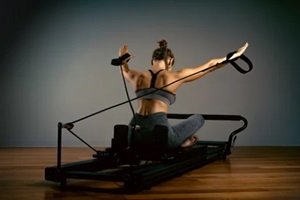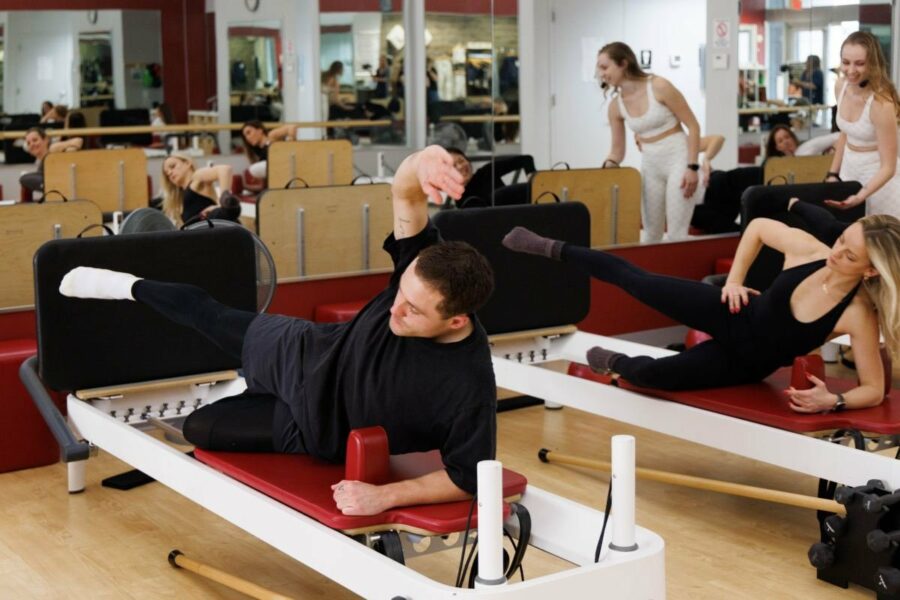 Whether you are a seasoned exercise enthusiast or just starting your fitness journey, two popular workout methods you’ve likely heard of are Pilates and aerobics. While both are beneficial forms of exercise, they have some key differences in their focus and approach.
Whether you are a seasoned exercise enthusiast or just starting your fitness journey, two popular workout methods you’ve likely heard of are Pilates and aerobics. While both are beneficial forms of exercise, they have some key differences in their focus and approach.
Pilates focuses on precision, control, and developing a strong core and flexibility while aerobic exercises focus on rhythmic motions that elevate your heart rate and maximize caloric burn.
Pilates incorporates some aerobic elements through flowing sequences and certain high-intensity exercises that elevate your heart rate.
However, it offers more well-rounded fitness benefits than traditional aerobics, as it focuses on the core allowing you to improve muscle strength and joint mobility, and boost neuromuscular control while also helping with cardiovascular endurance.
Those new to Pilates should begin with Pilates classes for beginners to acquire the proper form before progressing. At RTR Pilates, we recommend beginning with a Level 1 class.
Even if you have taken Pilates before, going back to basics and refreshing your form will provide an additional challenge to your workout.
As effective as Pilates and aerobics are individually, a combination of the two can provide a well-rounded approach to total body health.
Impact Level and Intensity
How Pilates and aerobics most significantly differ can be seen in the level of impact and overall intensity. Pilates emphasizes quality over quantity, utilizing precise, small motions instead of large, dynamic moves. The majority of Pilates exercises are low impact and gentle on the body, focusing on core strength rather than cardio exertion.
These carefully controlled motions make Pilates ideal for beginners, seniors, and those rehabbing injuries but also provide progression into intense variations of the same controlled movements.
Contrast this to high-intensity aerobics, where the goal is to sustain an elevated heart rate for a longer period of time. Typical aerobics classes are designed to get your blood pumping quickly; however, consistent full body weight impact can strain your joints.
Being able to progress to advanced Pilates exercises can provide a cardio challenge without placing extra stress on the joints. The controlled and precise movements of Pilates target smaller muscle groups for definition, while keeping intensity levels high and joint impact low.
 For example, in reformer-based Pilates classes at RTR Pilates, instructors increase intensity for advanced students by adjusting the resistance springs to add more tension and integrating more balance challenges into the movements.
For example, in reformer-based Pilates classes at RTR Pilates, instructors increase intensity for advanced students by adjusting the resistance springs to add more tension and integrating more balance challenges into the movements.
If you want to incorporate aerobics into your Pilates routine, try an RTR Pilates circuit class that incorporates jump boards that encourage low impact and faster, repetitive movement.
Muscle Building Potential
Pilates and traditional aerobics also diverge when it comes to muscle-building potential. The resistance training elements of reformer-based Pilates employ body weight, Pilates equipment, resistance bands, and leverage to strengthen muscles.
This method is designed to increase muscle tone and definition, not bulk. The muscle strengthening effects are visible as defined and lean.
On the other hand, cardiovascular aerobic activities primarily target the heart and lungs without providing enough resistance to grow muscle mass considerably.
Improving Flexibility and Mobility
One of the hallmarks of Pilates is the focus on joint mobility, range of motion, and overall flexibility training. Precise movements take each joint through a safe, controlled, full range of motion while paying close attention to proper alignment.
The concentration on flexibility is substantially greater in Pilates compared to traditional aerobics. Most aerobic activities don’t specifically focus on stretching your muscles or opening up tight areas.
While some level of flexibility is maintained due to the motion involved, the objective with aerobics is geared toward providing a cardiovascular challenge more than increasing flexibility.
For a substantial boost in mobility, dedicated work with Pilates is more effective. You don’t have to be flexible to start Pilates, as it is designed to meet you at your current level of mobility and slowly improve flexibility with controlled movements.
The Mind-Body Connection
Beyond the physical benefits, one of the main differences between Pilates and aerobics is the overall mindset and mental focus. Pilates emphasizes an inward concentration focusing on breathing, control, precision, coordination, with an awareness of the mind connecting with the body.
The refined movements in Pilates require great concentration, body awareness, and tuning into subtle changes. In contrast, the external dance-performance model of traditional aerobics centers on sustaining tempo, meeting cardio levels, and pushing through fatigue or discomfort.
 The extrinsic motivation around calories burned or output achieved often dominates mental focus in aerobic workouts rather than intrinsic awareness. For many, the greater psychological element inherent to Pilates proves empowering.
The extrinsic motivation around calories burned or output achieved often dominates mental focus in aerobic workouts rather than intrinsic awareness. For many, the greater psychological element inherent to Pilates proves empowering.
Try Pilates For Yourself at RTR Pilates
To experience reformer Pilates first-hand, take advantage of RTR Pilates’ 30-day introductory membership, which allows you to sample Pilates classes for beginners daily across all studio locations.
Our talented instructors will guide you through fundamental exercises focused on proper breath, alignment, and gentle movements to smoothly ease into the practice and make fitness a rewarding habit.
Contact RTR Pilates to get started on your journey to overall better health today!



